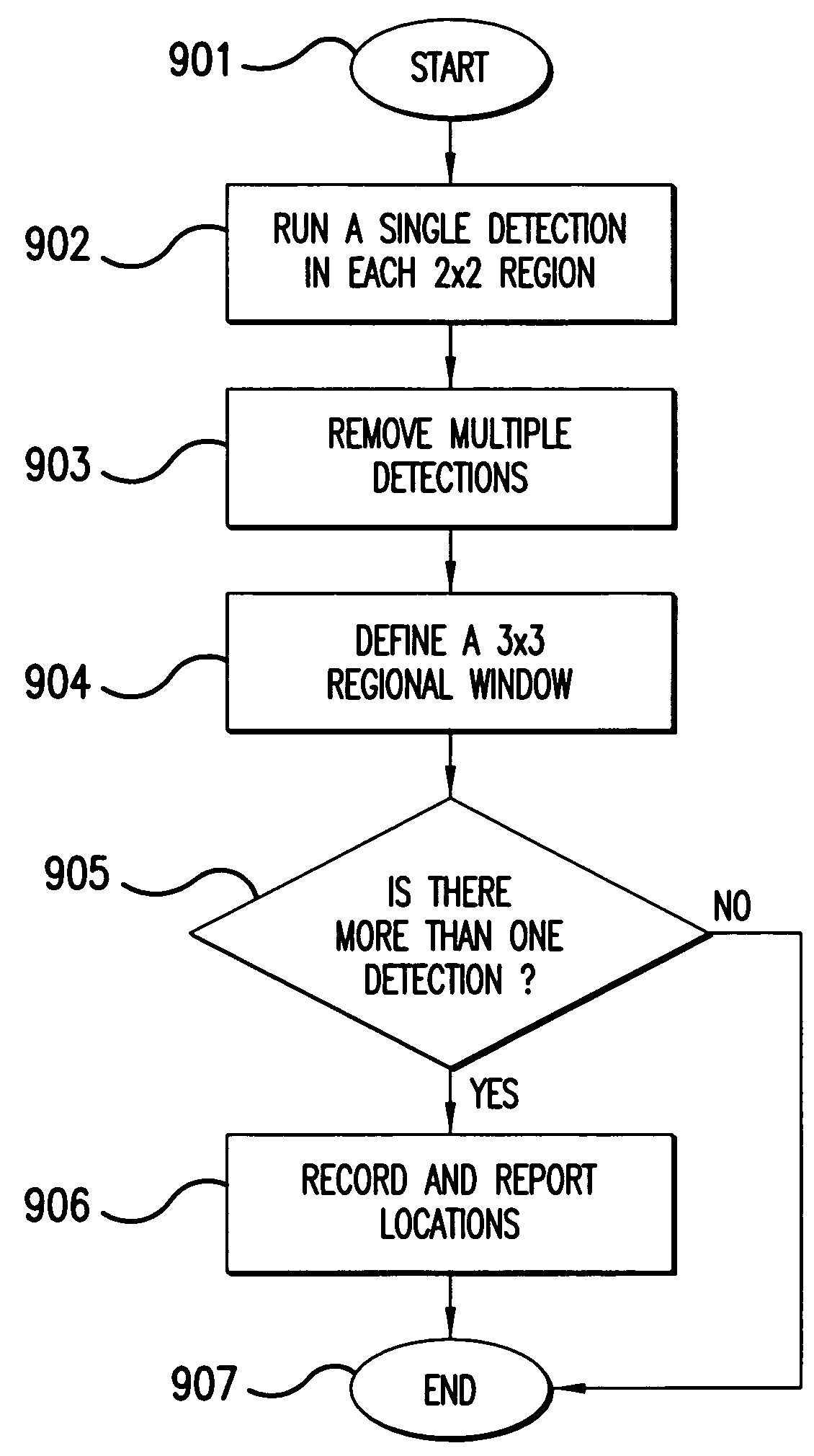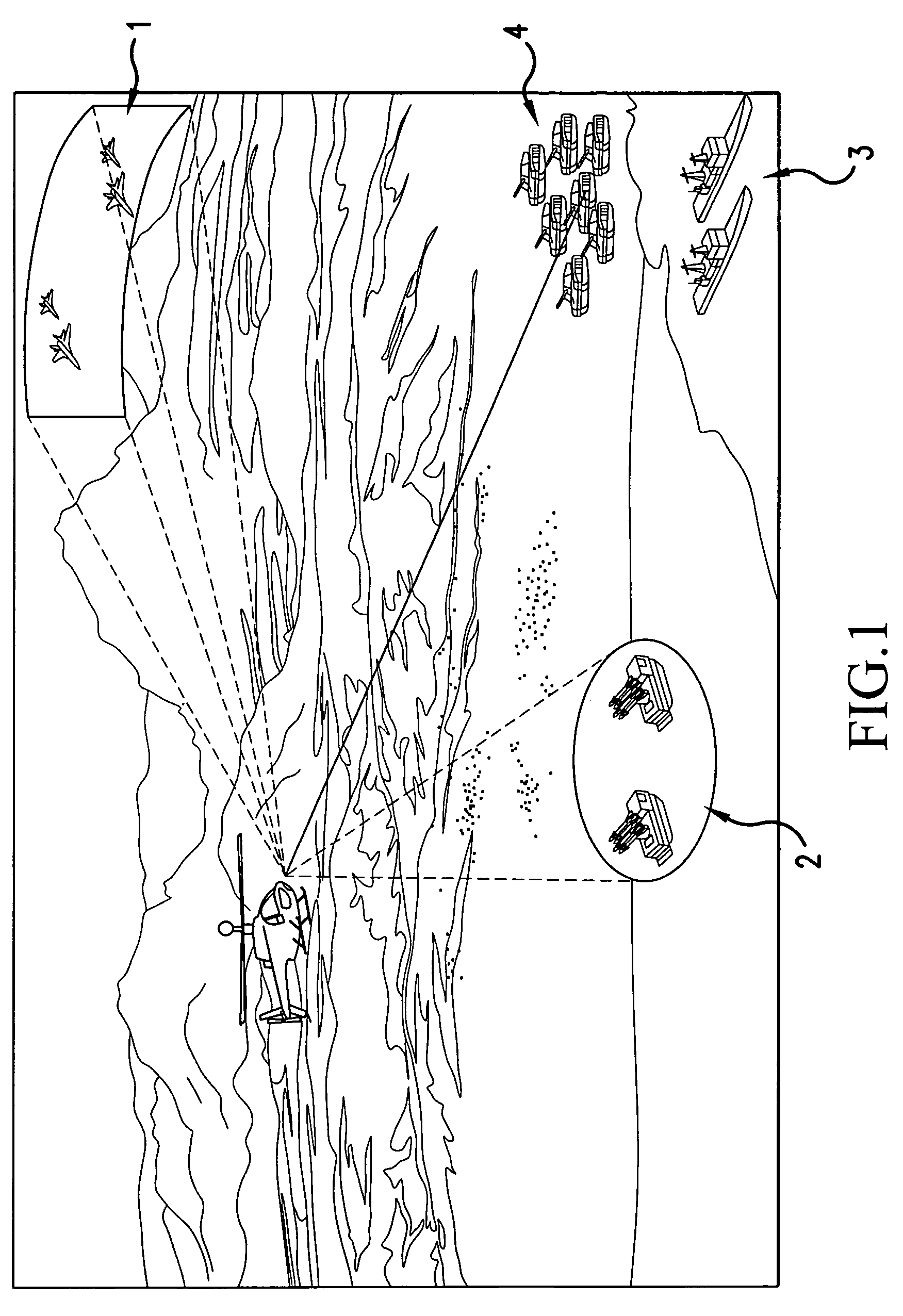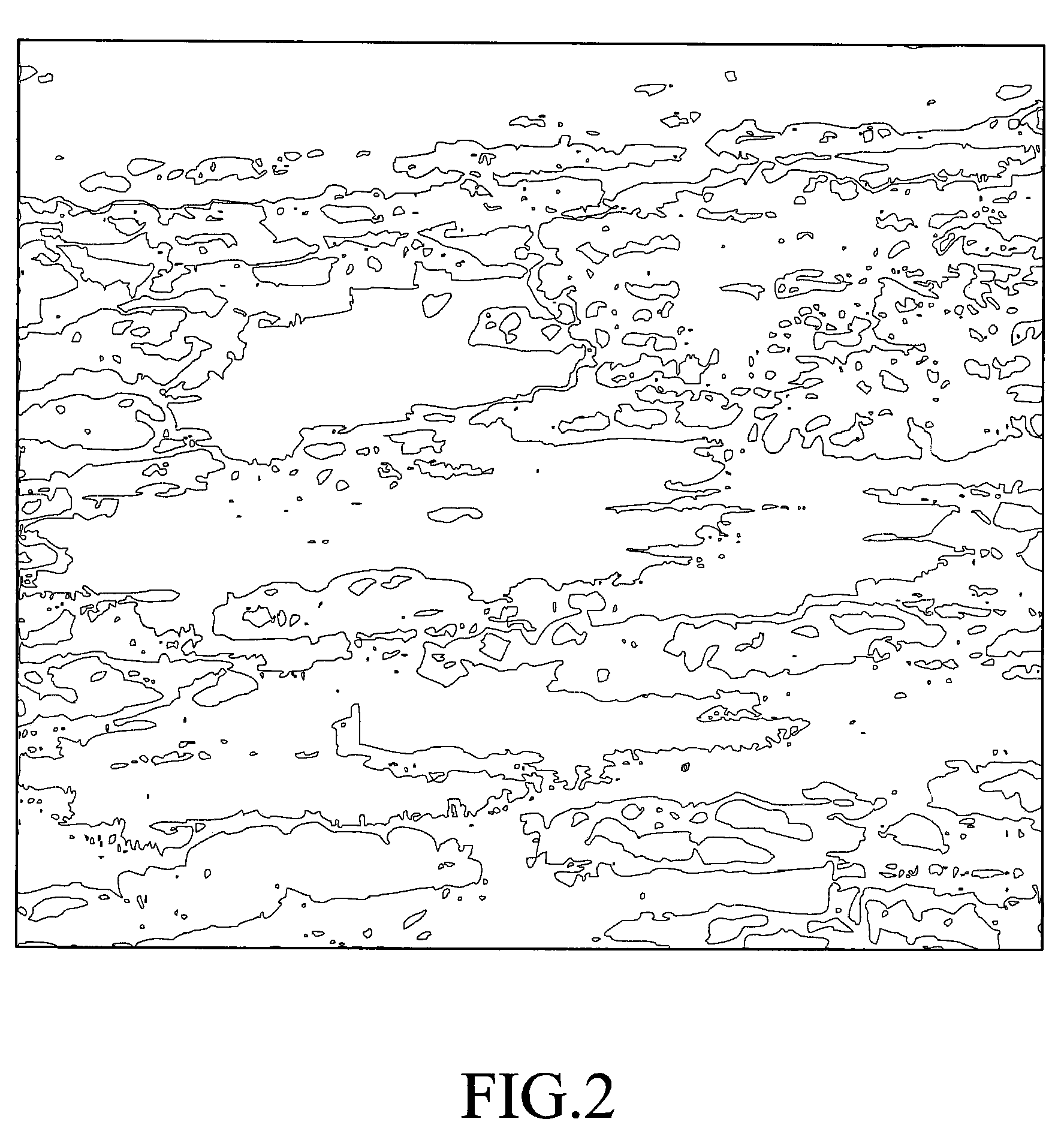Closely-spaced multiple targets detection using a regional window as a discriminant function
a regional window and discriminant function technology, applied in the field of unresolved target detection using an infrared focal plane array, can solve problems such as inability to deal well with target phasing problems, inability to guarantee, and problems in real-world applications, and achieve the effect of simple and reliable approach
- Summary
- Abstract
- Description
- Claims
- Application Information
AI Technical Summary
Benefits of technology
Problems solved by technology
Method used
Image
Examples
Embodiment Construction
[0017]In order to facilitate the reader's understanding of the present invention, the following list of acronyms and their general meanings are provided:[0018]ATR—Automatic Target Recognition[0019]CFAR—Constant False Alarm Rate[0020]CSOs—Closely Spaced Objects[0021]EOTDS—Electro-Optical Targeting Demonstration System[0022]FPA—Focal Plane Array[0023]IR—Infrared[0024]LS—Least-Square[0025]Pd—Probability of Detection[0026]Pdec—Probability of Target Detection[0027]Pfa—Probability of False-Alarm[0028]Pfa(Sngl) Probability of False-Detection for a Single Target[0029]Pfa(CSO) Probability of False-Detection for a CSO Target Pair[0030]ROC—Receiver Operating Characteristics[0031]SNR—Signal-to-Noise Ratio[0032]SCNR—Signal to Clutter Noise Ratio
[0033]The present invention includes reliable CSO detection algorithms using a regional window (3×3 or 5×5) as a discriminant function to distinguish single targets from CSO targets. The idea behind this approach is that the chance (probability) of the fa...
PUM
 Login to View More
Login to View More Abstract
Description
Claims
Application Information
 Login to View More
Login to View More - R&D
- Intellectual Property
- Life Sciences
- Materials
- Tech Scout
- Unparalleled Data Quality
- Higher Quality Content
- 60% Fewer Hallucinations
Browse by: Latest US Patents, China's latest patents, Technical Efficacy Thesaurus, Application Domain, Technology Topic, Popular Technical Reports.
© 2025 PatSnap. All rights reserved.Legal|Privacy policy|Modern Slavery Act Transparency Statement|Sitemap|About US| Contact US: help@patsnap.com



